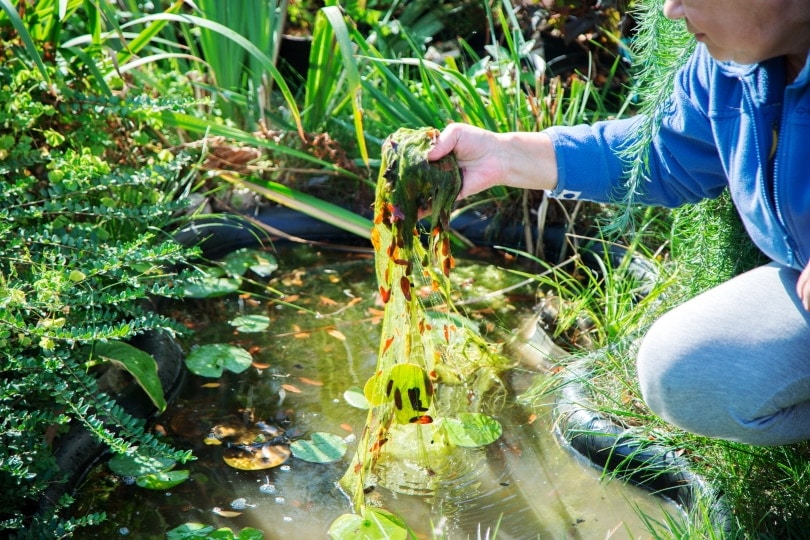Algae can be a huge pain to deal with, especially in something as large as a pond. When you have algae in your aquarium, you can easily scrape, vacuum, and cut away algae, but ponds are a whole other animal when it comes to cleaning and maintenance.
When trying to remove algae from a pond, you may find yourself dealing with chemicals that can pose risks to your fish and other pond life. There are ways to manage algae in your pond without risking the lives of your fish, but here’s what you should know.

Why Is Algae a Problem?
Many people find algae to be extremely unsightly, so they want to get rid of it for aesthetic purposes. There is a good reason to address algae overgrowth, though. While small amounts of algae aren’t harmful to your pond, excessive algae growth can actually pose risks to your fish.
During the daytime, algae photosynthesizes like a typical plant, pulling energy from sunlight and releasing oxygen into the pond. Good, right? Well, at night when the sun goes down, algae does something that many other plants don’t do.
Once night falls, algae wants to continue acquiring energy, but the sun is no longer available to provide it, so it will begin to pull oxygen from the water to maintain its metabolic function. With an overgrowth of algae, so much oxygen can be pulled from the water that it limits the oxygen available to your fish.
The 8 Tips on How to Get Rid of Pond Algae
1. Support the Presence of Beneficial Bacteria
The most important part of pond maintenance is supporting the colonization of beneficial bacteria. Just like in an aquarium, beneficial bacteria help maintain the health of the pond.
Beneficial bacteria help to maintain the breakdown of nutrients in the pond that can be dangerous for your fish and that may support the growth of algae. Beneficial bacteria colonies live in places that have water flow and oxygenation, like filter media.
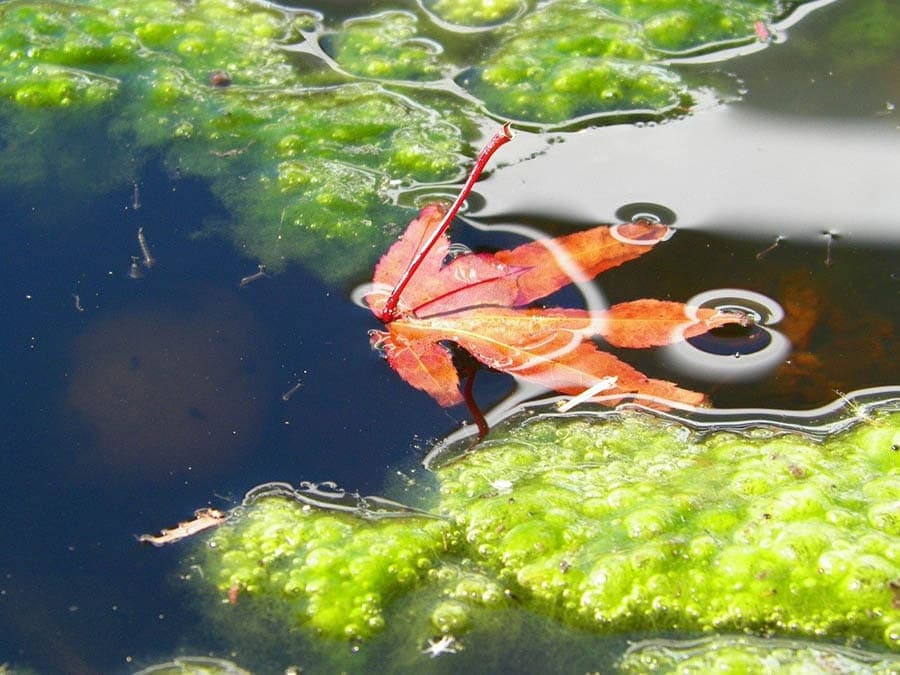
2. Remove Pond Debris
Ponds often acquire debris from many places, like grass clippings, leaves, and dead pond plants. This debris can sometimes provide nutrients that can support algae growth. By keeping your pond free of debris, you will reduce the available nutrients and surfaces for algae growth.
Pond debris can be removed with a pond rake, a net, or even by hand. This depends on the size of your pond, though. Obviously, a 1-acre pond isn’t going to be as accessible for debris removal as a 1,000-gallon pond is.
3. Physical Removal of Algae
Algae can be removed directly from your pond through multiple methods. Algae is easy to remove from the sides and bottom of a pond through the use of a pond rake, brush, or broom. Scraping the algae away and using a rake or net to remove it completely from the water will help get rid of it and prevent spread.
Sometimes, you may need to remove surfaces that algae is growing on, including plant leaves, driftwood, rocks, and any dead plant material.
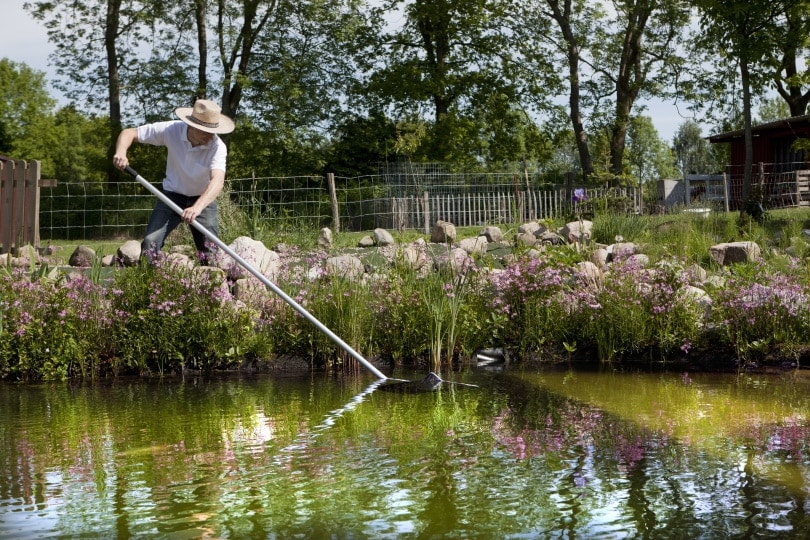
4. Add Floating Plants
Floating plants are an excellent way to remove nutrients from the water that can support algae growth. By providing your pond with lots of floating plants, you will help create an environment that outcompetes algae for nutrients. Floating plants are often considered to be a sponge of sorts, removing nitrates and phosphorus from the water.
5. Add Rooting Plants
Rooting plants aren’t as efficient at removing nutrients as floating plants, but they still can help to reduce the nutrients in the water. Without the presence of plants, algae can be allowed to grow unchecked. Rooting plants can help to remove some nutrients from the water column, but they also will remove excess nutrients from the substrate as well.
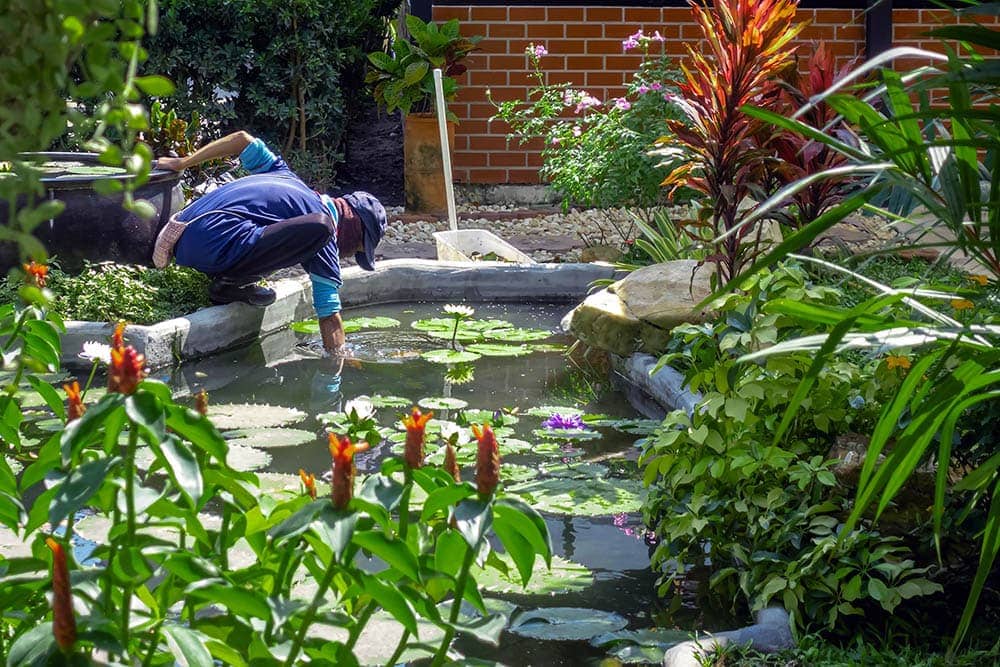
6. Add UV Lighting
UV lights can be added to the filtration system of your pond. This is an easy and efficient way to remove free-floating algae from the water column. UV lights will not remove surface algae, but as you attempt to remove algae from the water, it can begin to float to other parts of the pond and attach elsewhere. UV lighting helps to kill the algae that is free-floating, preventing it from landing elsewhere.
7. Try Barley Straw
Barley straw is one of the more natural ways to control algae within your pond. Barley straw can be added to the pond in small bales, but there are also liquid barley straw additives for ponds.
As barley straw breaks down, it will help to improve water clarity. Barley straw doesn’t actually do anything for algae that is already present in the tank, but it does help prevent new algae. There is minimal understanding of how this works so efficiently.
8. Algae Control Chemicals
Adding algicides to a pond is often a last resort for people, but sometimes it does become necessary. Reading the instructions on the algicide you purchase is necessary for ensuring it is safe for your fish. Some algicides are safer for pond life than others. It’s also important that you always follow the instructions for algicides exactly as they are written. Overuse of algicide can injure or kill your fish.
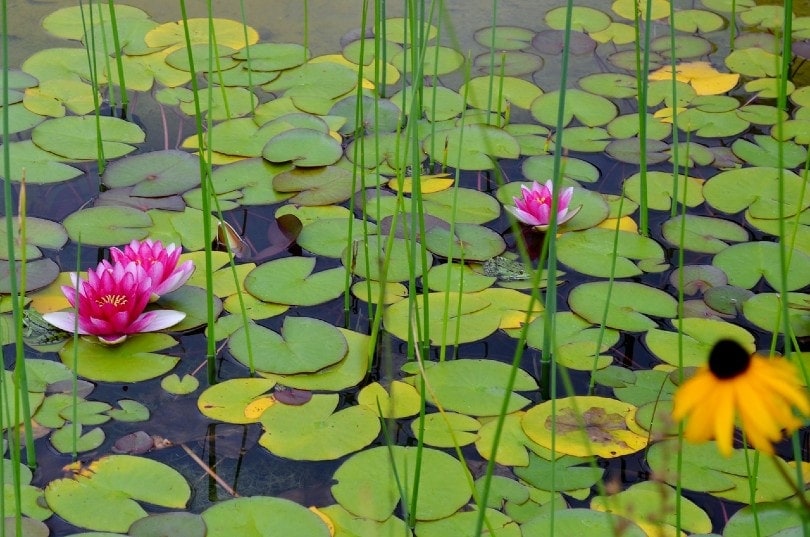

In Conclusion
Controlling algae in your pond often requires multiple steps and lots of effort. Algae is a tough issue, but you can do it with a proper commitment to removing the present algae and preventing future algae. Algae growth can change seemingly every day, so you should keep a close eye on your pond to monitor how your algae control and removal efforts are going.
Featured Image Credit: AlexReut, Shutterstock
